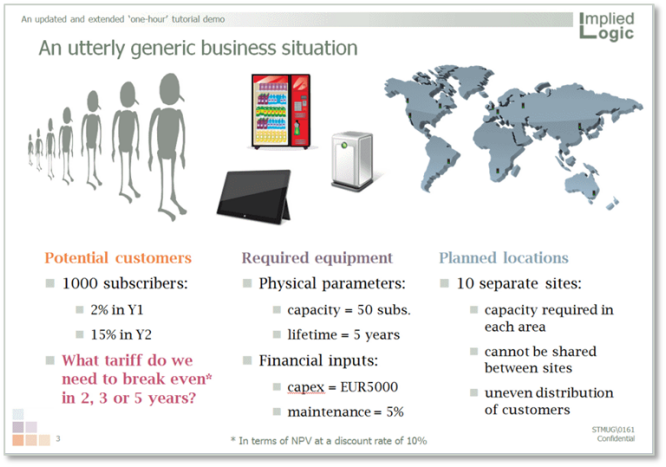In this tutorial demo, we are going to explore an utterly generic business situation using the STEM visual software for the reliable modelling of business.
Consider a generic business, consisting of three dimensions, each of which is a key consideration when mapping out the business plan:
- customers
- resources (equipment) required for customers
- locations in which to serve customers.
The customers may constitute, for example, subscribers to a particular service. In this example there will be 1000 potential subscribers, none of which subscribe in Y0, 2% subscribe in Y1 and 15% in Y2. We will use the model to help determine what to charge these customers to sustain the business.
The resource is a piece of equipment required to provide the service to customers (e.g., a vending machine) and must be present in all locations where customers are served. Each resource has a capacity of 50 subscribers, a physical lifetime of 5 years (how long before it must be replaced), a capital cost of EUR 5000 and an annual maintenance cost equivalent to 5% of the capital cost.
We will offer the service at ten discrete locations (sites), assuming that capacity is required at each location and that capacity can’t be shared across sites. No specific assumptions are made about the distribution of customers, other than that it will not be identical at each site.
With these parameters (summarized in Figure 1 below) and starting from a blank screen, we will use STEM to create some charts to quantify the business opportunity. We will explore what tariff you would need to charge to get payback on your initial investment within 2, 3 and 5 years (i.e., to not only make a profit but also make a reasonable return on the initial investment).

Figure 1: Summary of key parameters